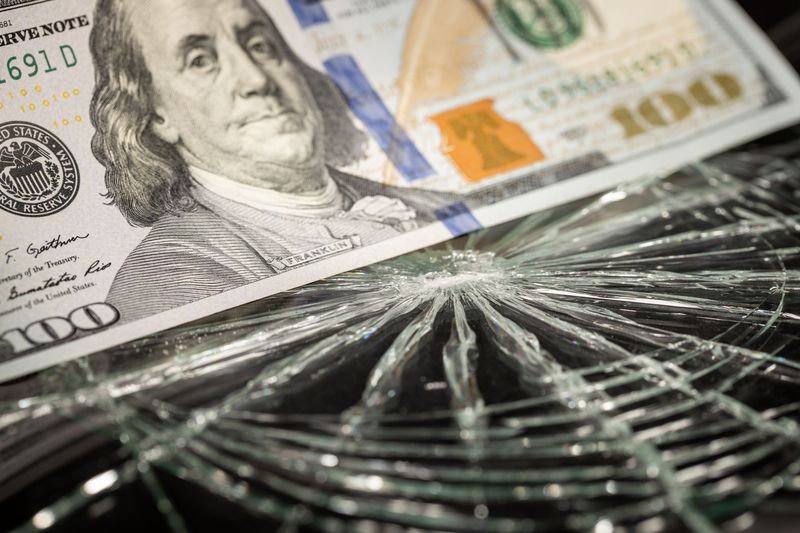US dollar hedging activity may have peaked, some banks say, as a frenzied scramble among foreign investors to hedge their exposures has slowed considerably in recent months.
Investors buying protection against a weaker dollar was the defining trend in the first half of the year in the US$9.6trn-a-day foreign exchange market, driving record trading volumes and delivering a bumper payday for banks brokering these flows.
That rush to sell the buck pushed the US Dollar Index to its lowest level in three and a half years as investor concerns grew over the impact of US tariffs on the world’s reserve currency. But the dollar has steadied since summer as trade war fears have eased, undercutting the case for foreign investors to increase FX hedging ratios on their roughly US$31trn of US securities holdings.
Various proprietary gauges of FX market sentiment and positioning show investors are the most bullish they’ve been on the dollar since before president Donald Trump’s “liberation day” tariff announcement in April, capping a remarkable turnaround from earlier in the year.
“US dollar hedging activity has now stabilised,” said Flavio Figueiredo, head of FX at Citigroup. “I can’t imagine US dollar hedge ratios increasing more than they already have. The external concerns we previously saw around tariffs, and the dollar potentially losing its safe haven status, have decreased.”
Past the peak?
US tariff policy yo-yoing was a major driver of FX market volatility earlier this year, prompting many investors to shield themselves against a weaker dollar after years of leaving much of the currency exposure unhedged in their US asset holdings.
Danish pension funds reduced their exposure by around US$16bn during the tariff turmoil to US$76bn at the end of June, according to BNP Paribas, while Dutch pension funds dialled down their unhedged dollar exposure by US$53bn in the first quarter to US$400bn. This hedging activity put downward pressure on the dollar and drove record trading volumes for banks’ FX desks.
“There's enormous activity in volumes in currencies at the moment, given this shift in the way people are thinking about and looking at the dollar,” Goldman Sachs chief executive David Solomon said on an April 14 earnings call that coincided with the height of the tariff turmoil. The US bank was one of many to report “significantly higher” FX revenues in the second quarter following what Solomon called “extraordinarily high, record activity levels”.
However, those flows tailed off over the summer months as the dollar found its footing and US equity markets recovered. Goldman reported “significantly lower” FX revenues in the third quarter, suggesting a slowdown in client activity. Traders and analysts, meanwhile, say there are signs of dollar bulls making a comeback with the US Dollar Index now up about 1.5% from its mid-September lows.
Conviction in shorting the US dollar has dropped to its lowest level since the tariff turmoil in April, according to a recent Bank of America investor survey. Barclays’ US dollar sentiment indicator, which weighs a mixture of newsflow and market data, is now its most positive on the greenback since early 2025. Citigroup’s FX quants said hedge funds have a net long dollar position after increasing bets over the past month.
“There’s a growing optimism now that, while the dollar isn’t going to rebound back to where it was at the beginning of the year, this continued deterioration of the US dollar versus the other G7 currencies is probably coming to an end,” said Jackie Bowie, head of EMEA at consultancy Chatham Financial.
Some analysts even see room for the dollar to rally further as investors’ attention switches to US growth prospects. TS Lombard strategists said in a recent note that US growth would have to “underwhelm expectations” for the dollar to fall from here, predicting that the buck's bounce has legs.
“The focus in the US is shifting towards the growth agenda, which could drive more positive focus and activity in the dollar,” said Figueiredo. “The US can potentially offer more opportunity than other countries given the growth agenda of the Trump administration, so I think the dollar may start coming back into positive focus.”
Or more to come?
Not everyone is convinced the dollar hedging story has run its course. Francesca Fornasari, head of currency solutions at Insight Investment, reported holding a short dollar position in a recent note on expectations of “greater hedging” of US assets, as well as “greater worries about the orthodoxy of US monetary policy”.
Citi’s FX quants said “real money” clients have increased their net short dollar position with the bank, “likely reflecting additional FX hedges for recent gains in US assets”. There are also signs that investors are putting currency hedges in place when funnelling new money into US assets. Hedged US inflows overtook unhedged inflows for the first time this decade in September, according to Deutsche Bank strategist George Saravelos.
Strategists at BNP Paribas in a September report also predicted that dollar "hedging [is] not over”. However, they conceded that increases in hedge ratios may not be as dramatic given the considerable adjustments earlier in the year.







